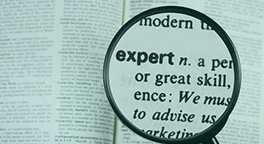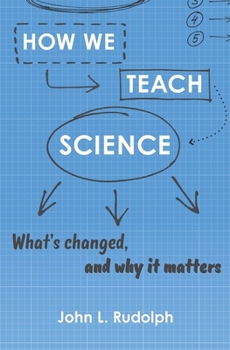How We Teach Science: What's Changed, and Why It Matters
Select Format
Select Condition 
Book Overview
A former Wisconsin high school science teacher makes the case that how and why we teach science matters, especially now that its legitimacy is under attack.
Why teach science? The answer to that question will determine how it is taught. Yet despite the enduring belief in this country that science should be taught, there has been no enduring consensus about how or why. This is especially true when it comes to teaching scientific process. Nearly all of the basic knowledge we have about the world is rock solid. The science we teach in high schools in particular--laws of motion, the structure of the atom, cell division, DNA replication, the universal speed limit of light--is accepted as the way nature works. Everyone also agrees that students and the public more generally should understand the methods used to gain this knowledge. But what exactly is the scientific method? Ever since the late 1800s, scientists and science educators have grappled with that question. Through the years, they've advanced an assortment of strategies, ranging from "the laboratory method" to the "five-step method" to "science as inquiry" to no method at all. How We Teach Science reveals that each strategy was influenced by the intellectual, cultural, and political circumstances of the time. In some eras, learning about experimentation and scientific inquiry was seen to contribute to an individual's intellectual and moral improvement, while in others it was viewed as a way to minimize public interference in institutional science. John Rudolph shows that how we think about and teach science will either sustain or thwart future innovation, and ultimately determine how science is perceived and received by the public.Customer Reviews
Rated 5 starsgreat condition !!!!!1
What great example of what a seller should be !!! Fast shipping and great condition !! Thank you very much
0Report
Rated 5 starsOutstanding Introduction to the Enterprise Software Concept
I am a Professor in the Management Information Systems area and I use this book as a quick and relatively painless introduction for students who know absolutely nothing about the software that supports Integrated Business Systems. It is an excellent read for that purpose. It focuses on why Enterprise Systems are valuable for some companies, the dangers of blind adoption, the value and power of systems integration, and some...
0Report
Rated 4 starsA good objective case study
This actually is a good read. It kept my interest for a full 2 hours, which is what is took to read it. The case study is real and on the mark. It illustrates that even if SAP is being widely adopted in your industry (in this case furniture), it may not be the right solution for you. In this instance, SAP (or the SAP implementation approach) was wrong because the company, whose business model was "make to order", tried...
0Report
Rated 4 starsCommon Sense Look at ERP
What steps an organization needs to consider and take before moving into an ERP environment is given so simply in this book. Jacobs and Whybark present the facts in such a way that anyone in an organization understands that ERP is not a magical cure for their ills. Yes, this book is written very much like "The Goal," yet one knows this from the start. Where is it written that such a book must be full of theories, processes...
0Report
Rated 4 starsUseful introductory tutorial disguised as a novel
This book is presented as the ERP version of "The Goal", and it is true that it takes the form of a novel. However, it is not clear that the weakly developed fictional elements add or detract from the message. The case study, however, is useful, and overall this is a palatable way to get an introduction to the implementation of Enterprise Resource Planning. Like most writing on ERP, it focuses on one software product,...
0Report













